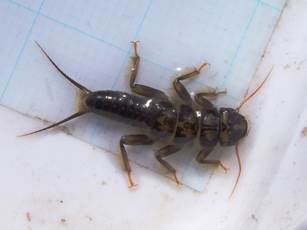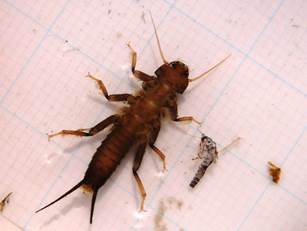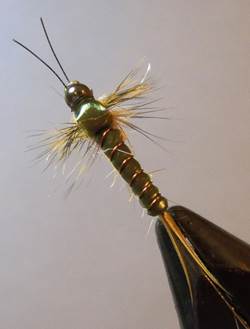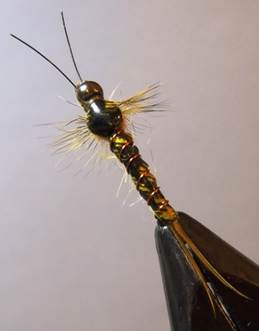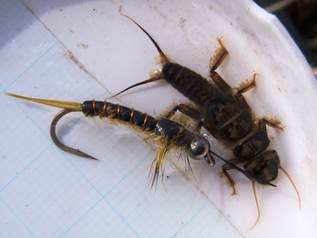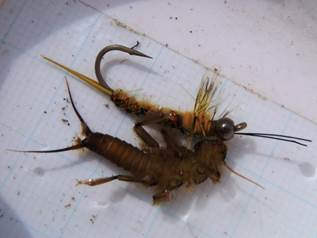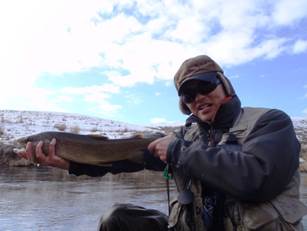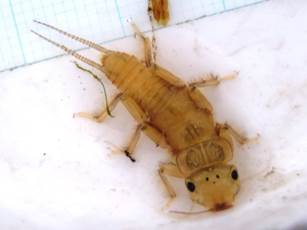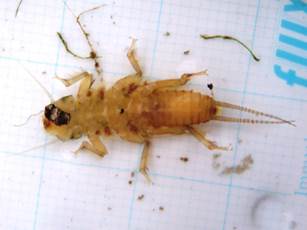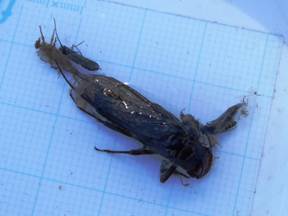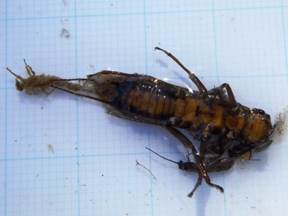FOOD SOURCES FOR SPRING CREEKS - FROM MINOR TO MAJOR - WITH FLY PATTERNS
| Sysadmin Note |
|---|
| Part 2 can be found here |
Chapter 3: Golden Stonefly Nymph
It is interesting to note that there is a solid population of stonefly nymphs found in Livingston's spring creeks. These are what we call "Golden Stones" (Family Peridae, Genus Acroneuria). It seems no wonder considering the location which is right by the Yellowstone River. But not many anglers would think of stoneflies when they talk about spring creeks. Perhaps it might be due to the fact that most anglers would imagine that the slow, flat, and mirror-like flow of spring creeks, is not suitable for stonefly nymphs to survive. Indeed, I often collect these nymphs in riffles, which are highly oxygenated. They are about 30mm (from tip of antennas to end of tails).
|
|
Top |
Bottom |
Seasonal Importance:
Just like those in free-stone rivers, these nymphs are present in spring creeks year around. However, just like cranefly larvae and crustaceans, during the months when mayflies and caddis are active, trout tend to focus on them and would pass up stonefly nymphs. An important note is that Livingston's spring creeks are used as spawning tributaries by large trout that run up from the Yellowstone River. Those "river trout" will inhale stonefly nymphs without any hesitation.
Spring Creek Stone Nymph
Some Golden Stone nymph patterns that are used in rivers should work. But I wanted to develop a more specific pattern. Just as seen in other spring creek flies (dry-flies, nymphs, or streamers), the idea behind designing of this stonefly nymph is: sparse, not over-dressing, and not too bulky.
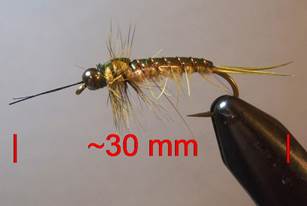 |
|
|
|
|
|
Shell top – Option 2: Thin Skin (Wapsi), Skinny Skin (Montana Fly Co.), Fino Skin (Hareline) in Golden stone color Right pictures: Here's a live nymph playing with my imitation. I had no doubt it was actually seeing my fly as a companion. |
|
How to Fish:
Use under an indicator rig in moderate to fast riffles, where stonefly nymphs are dislodged and washed away. Apply split-shots to achieve desired depth (speed to get down) and drift (the more weight, the slower to drift).
\
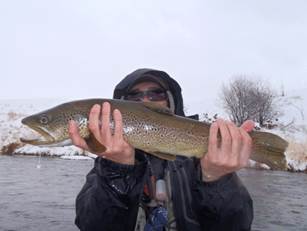 |
|
Need I say more? – both measured 24" from DePuy Spring Creek |
|
Albino:
While I was conducting a food sampling, I found what seemed to be an instar nymph. Do instar nymphs attract trout? Is specific imitation for instar nymphs needed? Topics are under investigation.
|
|
Top (eye-to-eye) |
Belly |
Is adult important? I have seen and collected nymph shucks floating on the surface. Golden Stones must be hatching in the creeks, but I honestly don't know if adult Golden patterns can be effective. I don't know if there are any anglers who actively fish with adult Golden dry-patterns, and if they have had success. One stomach sample really startled me when I found an adult Golden. That was one of late June days (= PMD time), which almost coincides to "stonefly time" on the Yellowstone.
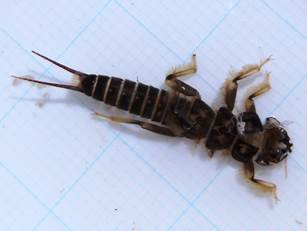 |
|
Nymphal shuck floating on the surface |
One fine brown caught during PMD hatch in June at Armstrong's... |
|
|
Trout above contained an adult Golden Stone! |
Belly up. |
Satoshi Yamamoto, https://leftyangler.blogspot.com, is a guide and a professional fly-tyer in Livingston, MT.
| Sysadmin Note |
|---|
| Part 4 can be found here |

